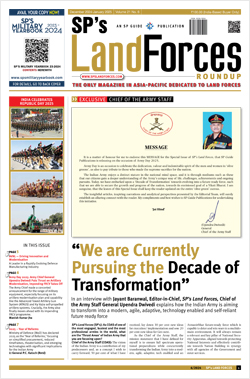INDIAN ARMED FORCES CHIEFS ON OUR RELENTLESS AND FOCUSED PUBLISHING EFFORTS
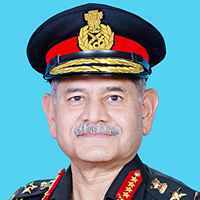
The insightful articles, inspiring narrations and analytical perspectives presented by the Editorial Team, establish an alluring connect with the reader. My compliments and best wishes to SP Guide Publications.
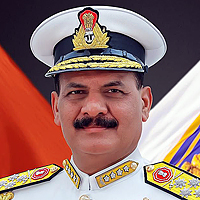
"Over the past 60 years, the growth of SP Guide Publications has mirrored the rising stature of Indian Navy. Its well-researched and informative magazines on Defence and Aerospace sector have served to shape an educated opinion of our military personnel, policy makers and the public alike. I wish SP's Publication team continued success, fair winds and following seas in all future endeavour!"

Since, its inception in 1964, SP Guide Publications has consistently demonstrated commitment to high-quality journalism in the aerospace and defence sectors, earning a well-deserved reputation as Asia's largest media house in this domain. I wish SP Guide Publications continued success in its pursuit of excellence.
- MoD initiates comprehensive review of Defence Acquisition Procedure 2020, pushes for defence reforms
- G7: The Swansong
- Kalinga Connect: South Asia to Polynesia
- Must Credit DRDO for Operation Sindoor, now what is next for defence R&D?
- The layered Air Defence systems that worked superbly, the key element of Operation Sindoor
- Operation Sindoor | Day 2 DGMOs Briefing
- Operation Sindoor: Resolute yet Restrained
Building NATO's Next-Gen Cyber Security
A comprehensive Cyber Defence Policy, which outlines the principles for integrating cyber defence into NATO's overall security framework. In a special interaction at the NATO Centre in Tallinn, Manish Kumar Jha meets NATO Director, Mart Noorma on this policy which emphasises the need for collective defence in cyberspace and ensures cyber threats as traditional military threats. How a NATO Cooperative Cyber Defence Centre of Excellence (NATO CCDCOE), an international military organisation in Tallinn, Estonia, is leading the world's most resilient cyber security mechanism.
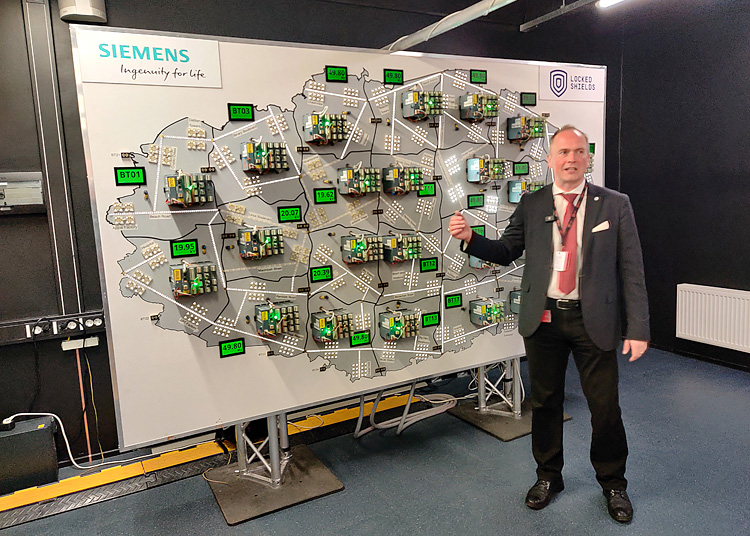
Cyber defence is one of the areas of strengthened cooperation between NATO and the EU as part of the two organisations' increasingly coordinated efforts to counter hybrid threats. NATO and the EU share information between cyber response teams and exchange best practices. Cooperation is also being enhanced in areas including training, research, and exercises, with tangible results in countering cyber threats. The Technical Arrangement on Cyber Defence between the NATO Computer Incident Response Capability (now known as the NATO Cyber Security Centre) and the Computer Emergency Response Team for the EU institutions, bodies, and agencies (CERT-EU) provides a framework for exchanging information and sharing best practices between emergency response teams.
Cyber defence is a core area of cooperation between NATO and the EU, with enhanced efforts in training, research, and exercises yielding tangible results.
NATO and Allies are responding by strengthening the Alliance's ability to detect, prevent and respond to malicious cyber activities. NATO and its Allies rely on strong and resilient cyber defences to fulfil the Alliance's three core tasks of deterrence and defence, crisis prevention and management, and cooperative security. The Alliance needs to be prepared to defend its networks and operations against the growing sophistication of the cyber threats it faces.
How a NATO Centre of Excellence (COE), an international military organisation (NATO CCDCOE) in Tallinn, Estonia, is leading the world's most resilient cyber security mechanism.
NATO CCDCOE: The working mechanism
NATO's CCDCOE include services Research Concepts, Doctrines, Standards Education, and Training Exercises Main competencies are in cyberspace technology, operations, strategy, and law.
Strategic focus on supporting national capability development in five focus areas. Capability to conduct cyberspace operations and activities, based on a common framework which is termed--C2. Capability to incorporate cyber domain considerations into Joint and Multi-Domain Operations and Activities-C3. Capability to conduct multinational cyberspace operations and activities-C4. Capability to conduct military-civilian cyber activities-C5.
The NATO CCDCOE in Tallinn, Estonia, is a global leader in cyber defence, focusing on technology, strategy, operations, and law.
NATO's approach is based on the fact that it includes private entities to achieve its goal towards the most robust cyber security. So, it includes the capability to conduct cyberspace operations and activities in public-private partnerships.
Cyberspace Operation Capability Development Cyber-Persona includes IT hardware Effects of cyber operation (incl. collateral damage), cyber operational command, political, diplomatic, legal, and information environments with cognitive effects Multidomain and joint operational command.
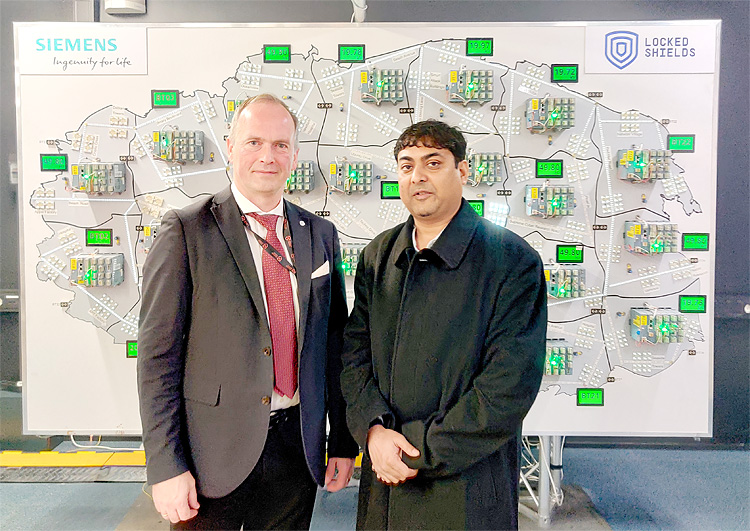
NATO Science and Technology Trends 2043
Based on the observations the technological developments will be increasingly intelligent, interconnected, decentralised, and digital. These lead to military capabilities that are increasingly autonomous, networked, multi-domain, and precise.
Moreover, technology will be increasingly dual-use. Emerging technology-enabled capabilities will enable the NATO Warfighting Capstone Concept's five Warfare Development Imperatives with a focus on cognitive superiority.
How NATO's cyber security mechanism works is based on integrated multi-domain defence and Cross Domain Command (CDM).
The robustness comes out of the layered resilience and wide-ranging influence and power projection. However, at the same time, such technologies present significant operational, interoperability, ethical, legal, and moral concerns.
NATO CCDCOE
During the discussion with NATO CCDCOE Director, Mart Noorma, what is essential to focus is the key areas: Big Data, Information & Communication Technologies, and Artificial Intelligence. According to Mart, Estonia's legacy in building on IT leverages the futuristic roles of robotics & autonomous Systems.
Crucially, NATO has earmarked and funded space technologies to strengthen its objective. Mart emphasised the preparedness in building blocks in Hypersonic Technologies, Quantum Technologies, and Bio & Human Enhancement Technologies.
The NATO CCDCOE plays a crucial role in organising training programs like the Locked Shields exercise, improving the alliance's operational readiness.
In the overall defence mechanism, which includes cyber defence, NATO's focus will remain on building Materials & Advanced Manufacturing, leading to energy & propulsion. Along, with NATO's futuristic assessment, the biggest shift will be in Electronic & Electromagnetic Technologies.
Estonia's pioneering role in cybersecurity and its leadership at NATO CCDCOE
Estonia is widely recognised as a leader in cybersecurity, both for its innovative approaches to digital governance and its active role in global cyber defence. As one of the first countries to embrace the digital age fully, Estonia has integrated advanced cybersecurity strategies into its national policies and is an essential contributor to NATO's cybersecurity efforts through its role in the NATO Cooperative Cyber Defence Centre of Excellence (CCDCOE). Estonia's pivotal role in the cybersecurity landscape leads NATO's efforts in defending against emerging cyber threats.
The Rise of Estonia as a Cybersecurity Hub
Estonia has made significant strides in leveraging digital technologies since regaining independence from the Soviet Union in 1991. By 2000, Estonia launched its e-government infrastructure, which allowed citizens to vote online, access healthcare, and manage taxes digitally. As the country became increasingly digitalised, it also recognised the critical importance of securing its cyber domain.
In 2007, Estonia experienced a major cyberattack that targeted government websites, media outlets, and financial institutions. Known as the "Estonian Cyberwar," this attack exposed the vulnerabilities of the digital infrastructure of a nation heavily reliant on information technology. The attack, widely attributed to Russian hackers, caused widespread disruption, and became a turning point for Estonia, underscoring the need for robust cybersecurity measures.
In response, Estonia redefined its approach to national security, integrating cybersecurity into its overall defence strategy. The country pioneered several innovative solutions, such as the introduction of the X-road, an encrypted platform for secure e-governance services, and the creation of a digital identity system for citizens. These measures not only safeguarded Estonia's critical infrastructure but also made the country a role model for cybersecurity innovation.
NATO Science and Technology Trends predict increasingly autonomous and networked military capabilities, presenting both opportunities and ethical challenges.
Estonia and NATO: A Partnership for Cyber Defence
Estonia's leadership in cybersecurity aligns with its position as a key member of NATO. Given its geographic location near Russia, Estonia faces a heightened threat from cyber warfare and has become a critical player in NATO's efforts to enhance its cyber defence capabilities. Estonia's national strategy and expertise in cyber defence positioned it to contribute significantly to NATO's initiatives.
In 2008, NATO recognised the growing importance of cyber threats and established the NATO Cooperative Cyber Defence Centre of Excellence (CCDCOE) in Tallinn, Estonia. The CCDCOE serves as the alliance's hub for cyber defence research, training, and exercises. Its mission is to improve NATO's cyber defence capabilities, enhance information sharing among member states, and promote best practices for protecting critical infrastructure.
NATO CCDCOE: The Heart of NATO's Cyber Defence Initiatives
The NATO CCDCOE plays a central role in fostering international cooperation in the cyber domain. It brings together experts from NATO member states, as well as partners, to share knowledge, develop strategies, and improve cyber defence policies. Estonia, as the host nation, has taken a leadership role in shaping the CCDCOE's direction and advancing the cyber defence agenda within NATO.
The CCDCOE conducts in-depth research on cyber threats, vulnerabilities, and defence mechanisms. Through this research, the centre develops new cybersecurity doctrines and strategies, making vital contributions to NATO's ability to counter cyberattacks. This research helps improve cyber defence across the alliance and serves as a resource for national governments and private sector partners.
The CCDCOE is responsible for organising and executing advanced training programs and cyber defence exercises. One of the centre's key activities is hosting the annual Locked Shields exercise, a large-scale cyber defence simulation. The exercise involves NATO and partner nations and challenges them to respond to complex cyberattacks in real time. It provides a platform for sharing knowledge, testing the resilience of national and NATO networks, and improving operational readiness in the face of evolving cyber threats.
Development of Cyber Defence Doctrines Estonia, through its leadership at the CCDCOE, has contributed to the development of NATO's cyber defence doctrines. One of the notable contributions is the Comprehensive Cyber Defence Policy, which outlines the principles for integrating cyber defence into NATO's overall security framework. This policy emphasises the need for collective defence in cyberspace and ensures that cyber threats are treated with the same level of seriousness as traditional military threats.
Public-Private Partnerships Recognising that cyber defence requires a whole-of-society approach, the CCDCOE also collaborates with the private sector. Many critical infrastructures, such as energy grids, telecommunications, and financial institutions, are privately owned. Therefore, cooperation with private entities is essential for building resilient systems and ensuring cybersecurity standards across all sectors. Estonia's active participation in these public-private partnerships reinforces its leadership in global cybersecurity.
Key Cybersecurity Challenges and Estonia's Response
Estonia has faced several significant challenges in cybersecurity, ranging from geopolitical tensions to the increasing sophistication of cyberattacks. The threat landscape continues to evolve as adversaries develop more advanced tools for cyber espionage, sabotage, and warfare.
State-Sponsored Cyber Attacks: As a NATO member on the eastern edge of Europe, Estonia is especially vulnerable to state-sponsored cyberattacks. The 2007 cyberattack was one of the first examples of a state using cyberspace as a tool of political and military influence. Since then, Estonia has worked to strengthen its defence systems and collaborate with NATO and other international partners to respond to similar threats.
Cybercrime and Ransomware: The rise of cybercrime, particularly ransomware attacks targeting businesses and governments, has been another significant concern for Estonia and NATO. Estonia has taken a proactive stance by sharing intelligence on these cybercriminal activities and improving its national cybersecurity posture.
The Evolving Threat of AI and Cyberwarfare: The increasing use of artificial intelligence (AI) and machine learning in cyberattacks represents an emerging challenge for both Estonia and NATO. Estonia, with its focus on cutting-edge technologies, has been at the forefront of developing solutions to combat AI-driven cyber threats, advocating for the use of machine learning in cyber defence systems and automation for threat detection and mitigation.
Estonia's leadership in cybersecurity, coupled with its central role in NATO's Cooperative Cyber Defence Centre of Excellence, has positioned the country as a global hub for cyber defence and digital resilience. Through the CCDCOE, Estonia has contributed significantly to the development of NATO's cybersecurity doctrines, facilitated crucial research, and provided training to improve the alliance's ability to counter the growing array of cyber threats.
Estonia's commitment to cybersecurity is not only critical to its defence but also serves as a model for other nations seeking to bolster their cyber defences. By maintaining a robust, forward-thinking cybersecurity strategy, Estonia will continue to play a leading role in the protection of the global digital infrastructure and in securing the future of international cybersecurity cooperation.
Manish Kumar Jha is a Consulting & Contributing Editor for SP's Aviation, SP's Land Forces and SP's Naval Forces and a security expert. He writes on national security, military technology, strategic affairs & policies.





